Marketers are allocating a greater portion of their advertising budgets to digital channels now. Digital advertising platforms offer increasingly precise data to marketers, so they’re able to reach their customers more effectively. PwC’s Global Entertainment & Media Outlook report predicts that by 2022, more than 50% of advertising budgets will be digital.
Earlier this year, eMarketer estimated that 87.5%, or $81 billion, of all US digital display advertisements will be bought via automated channels in 2021. Since 2013, programmatic advertising has exploded and investments have increased year over year. It’s now the primary method for buying digital display ads in the US.
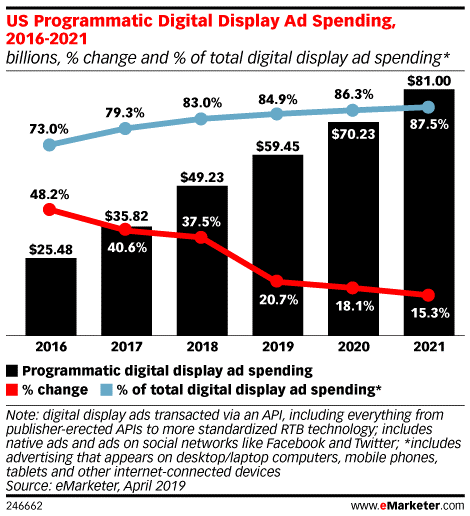
As technologies and consumer behavior have evolved, so has programmatic advertising. Mobile technology has rapidly grown worldwide, as has social media usage. This increase has spurred marketers to allocate two-thirds of programmatic advertising budgets towards mobile instead of desktop ads. Beyond the browser, programmatic advertising is being used for new channels, like TV, audio and out-of home (OOH).
Today, programmatic display advertising is the fastest-growing segment of digital marketing. If you want to reach consumers with precise targeting, you need to invest in programmatic. Programmatic advertising is the future of digital advertising, and there couldn’t be a better time than now to get started with it.
But we know that for many marketers, programmatic advertising is intimidating. It seems complex. The jargon and acronyms are confusing. Where do you even start?
Don’t worry, this article explains everything you need to know to launch your first campaign. Use the links below to navigate through the article.
Table of Contents:
- What is programmatic display advertising?
- Why your brand needs programmatic advertising
- Important terminologies
- Types of programmatic display advertising
- How programmatic display advertising works
- How to get started with your first programmatic advertising campaign
- Top demand side publishers (DSP) in 2019
- Programmatic advertising FAQ
What is programmatic display advertising?
So, what exactly is programmatic display advertising? According to MarketingLand, programmatic advertising helps automate the decision-making process of media buying by using software to target specific audiences.
Digiday defines it as: “The use of software to purchase digital advertising, as opposed to the traditional process that involves RFPs, human negotiations, and manual insertion orders. It’s using machines to buy ads, basically.”
To put it simply, programmatic advertising is when you use intelligent software to automatically buy digital advertisements. Programmatic display advertising goes by several other names including real-time bidding (RTB), programmatic, programmatic advertising, and programmatic buying.
Here is what happens when you run a programmatic advertising campaign:
-
- You buy an ad space via an Ad Exchange.
- You enter your bid against your competitors.
- Your ad will be served if you’re the highest bidder.
Why your brand needs programmatic advertising
There are several good reasons as to why your brand should use programmatic buying. Statistics show that brands, both small and large, are actively involved in programmatic advertising across multiple channels.
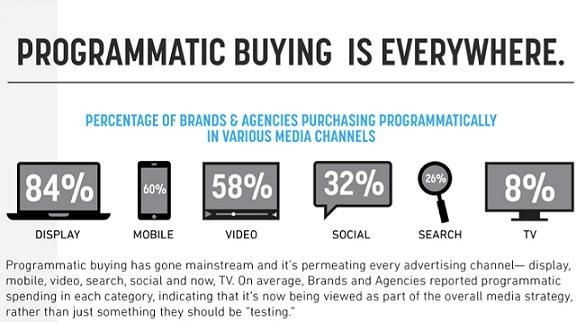
But you don’t have to use it just because everyone else is using it. Here are a few major reasons for, and the benefits of, using programmatic advertising:
Targeting:
One of the primary benefits that your brand will enjoy is that you can laser-target your audience. Google conducted a survey and asked advertisers what was the most attractive feature of programmatic advertising.
Some 76% of advertisers reported that targeting options were what they loved about it.
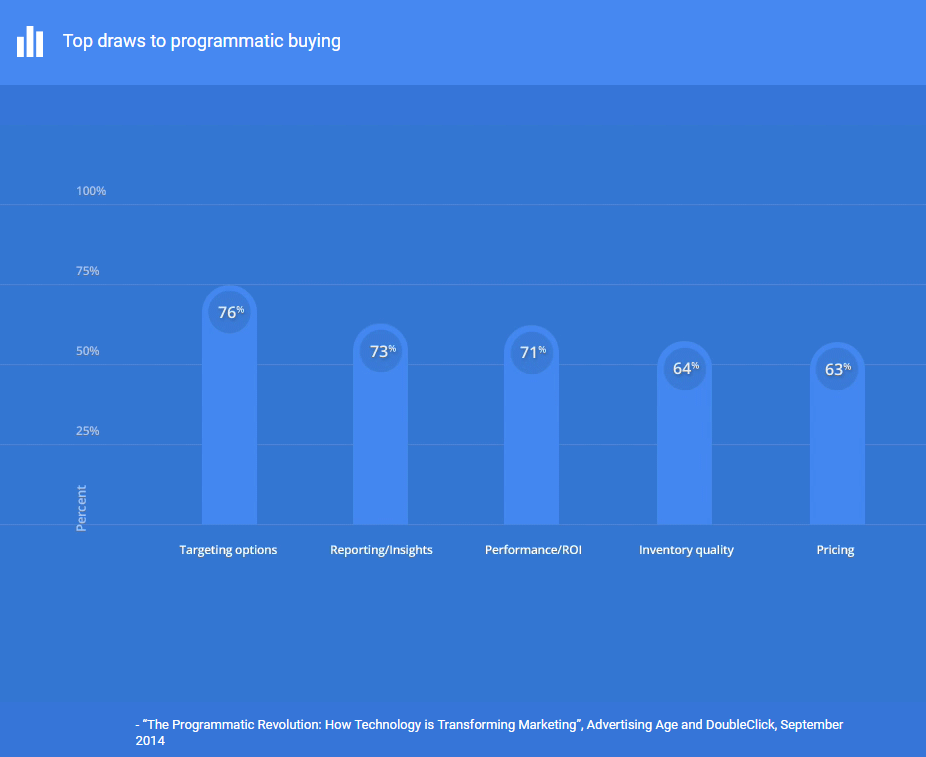
The Economist showed the world in 2015 how to use programmatic advertising like a boss. It won the Masters of Marketing award for its series on strategy and campaign. The Economist created 60 creatives to target some 650k prospects who were reading similar stories on leading news sites.
With the help of dynamic advertising, creatives are built in real-time to match the viewer’s preferences and the current story they were reading to one of the Economist’s similar story.
Here’s an example:
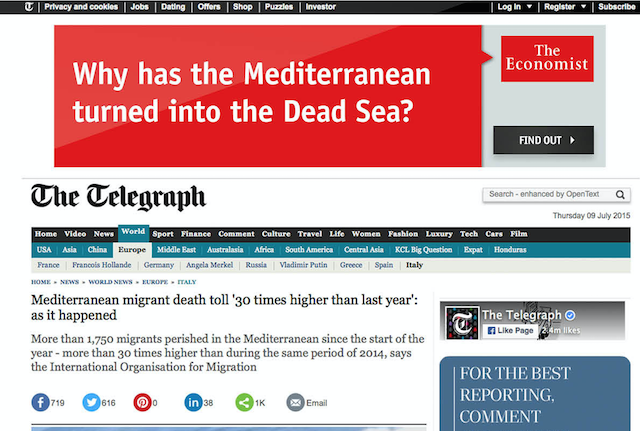
The reader was reading a story on The Telegraph regarding the Mediterranean migrant death toll. On that same page, an ad was displayed that stated: “Why has the Mediterranean turned into the Dead Sea?” This ad led the user to a similar story on The Economist.
These types of highly targeted ads were created automatically for hundreds of users, based on analyzing The Economist website and app and then matching cookies and subscriber data to create an audience for seven sections. A look-alike audience was then created as the target audience for this campaign.
The end result? The Economist achieved 50% of its target in 9 days with an ROI of over 10:1. More than 3.6 million people took action as a result of this campaign.
This is what you can achieve with the help of programmatic advertising. Your campaign might not deliver these exact results, but you can definitely get better results than what you would with traditional advertising. Programmatic advertising is, undoubtedly, the best when it comes to targeting. AdWords is no match.
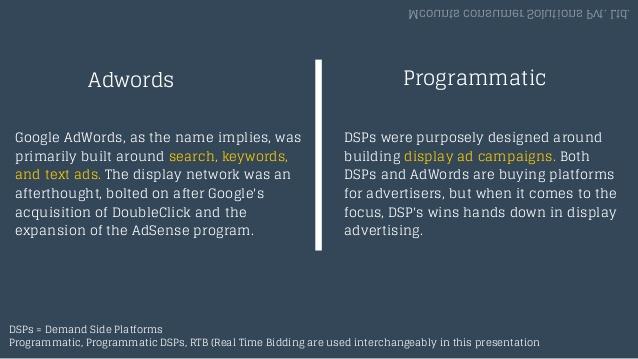
High ROI:
Programmatic advertising uses artificial intelligence (AI). This is why it is known as programmatic advertising. What does that mean? It means the program learns and gets better with time as to where and when to run your ads for maximum conversion and ROI.
It is highly targeted, multi-channeled, and uses AI to adapt. Therefore, any advertiser who uses programmatic buying gets a massive return on investment. This is the reason why marketers have invested more money in digital than traditional. Digital now accounts for 54.2 percent of the market.
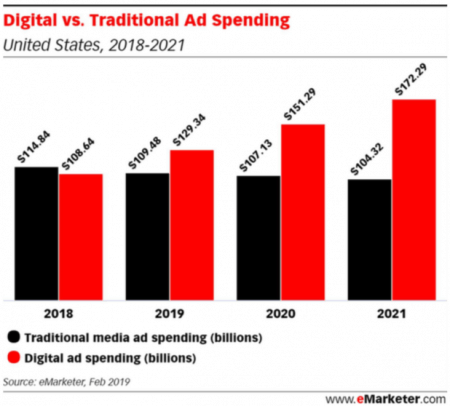
CarTrade used programmatic advertising to increase its conversion rate by 30% and its CTR by 120%. It also generated 5 times more leads.
It’s a lot easier to increase the ROI of your programmatic display advertising campaign if you’re using the right tools.
For instance, you can use AdWords, Analytics, and DoubleClick (Google’s programmatic advertising platform) to set up an attribution model to see how each programmatic advertising channel aligns with your customer’s journey.
Multichannel:
One of the major issues with traditional advertising channels such as AdWords and Bing is that they have their own network of sites where your ads are displayed. For instance, when you run a display campaign on AdWords, your ads will only be shown on Google’s partner websites. Fine enough. But what about other websites that are not part of Google Display Network? Similarly, if you run a video ad, even if your campaign is running with the world’s largest ad network, you’ll only be able to reach YouTube.
What if you wish to reach other streaming sites?
Programmatic advertising provides you access to a massive inventory of ad networks, publishers, and ad exchanges. You can run ads in several formats, including media-rich ads that are interactive and personalized. The best part is you can advertise on mobile, desktop, tablets, apps, in-videos, and pretty much everywhere you want. If the options seem endless, it may make sense to reach out to a programmatic display advertising agency for some advice.
Better reporting:
Because programmatic advertising uses AI and is highly targeted, you’re able to get data-rich reports and actionable insights on your campaigns, ads, target market, and buying patterns. This can help you make smarter marketing decisions and efficiently grow your business.
Since it makes targeting a piece of cake and you can literally serve a unique ad to every single person, this allows you to analyze your customers at an individual level, which is not possible with other forms of online advertising. If you can combine reporting from your programmatic advertising campaigns with big data, you’ll be unstoppable.
Other reasons for, and benefits of, using programmatic display advertising right now are:
- It is a totally automated buying platform.
- It supports media buying from several different networks.
- You have real-time bid adjustments.
Important terminologies
Unfortunately, programmatic advertising is filled with lots of jargon and acronyms. Before you can fully understand programmatic advertising, you need to know these major terms:
Real-Time Bidding (RTB): Buying and selling of ad space online via real-time auctions that happen in milliseconds.
Demand-Side Platform (DSP): Software that is used by advertisers to buy ads automatically. It is more of a technology than a software. Some of the leading DSP platforms include Turn, MediaMath, Invite Media, and DataXu.
Supply-Side Platform (SSP): A technology platform used by publishers to sell advertising space automatically. It is the publisher’s equivalent of DSP. Leading SSP platforms include Google, OpenX, Right Media, and PubMatic.
Data Management Platform (DMP): A data warehouse that’s essentially a software that holds information about consumers and customers. DMP collects information primarily through cookies that are used for advertiser targeting.
Ad Exchange: A digital marketplace where advertisers and publishers buy and sell ads. Leading ad exchange platforms for programmatic advertising include OpenX, The Rubicon Project, and Google.
First-Party Data: First-party data is highly reliable information because it comes directly from the source, either the digital publisher or the platform holder. For instance, if you choose to advertise on LinkedIn, you can get information about the audience to tailor your campaign.
Now that you know these acronyms and definitions, let’s move ahead and see how they fit together in the programmatic advertising ecosystem.
Types of programmatic display advertising
There are two major types of programmatic media buying: programmatic real-time bidding (RTB) and programmatic direct.
1. Programmatic RTB
If you’ve ever used AdWords or any other advertising network, you can easily understand what programmatic RTB means. Just like how AdWords calculates bidding in real-time for all the advertisers, the same goes with the programmatic RTB.
In this case, real-time bidding is done programmatically and the highest bidder’s ad is displayed. Here is how it works:
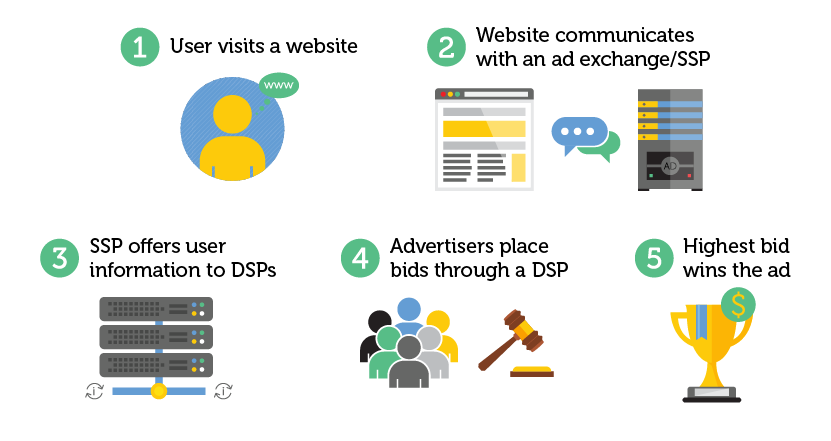
Whenever a web page with a programmatic ad space loads, the information about the web page and the user visiting it is sent to the ad exchange or SSP. The ad exchange awards the available ad space to the highest bidder. This is done in milliseconds–the back end is completely on autopilot.
A potential advertiser uses a DSP for bidding on ad spaces. The purpose of a DSP is to automatically bid on the most relevant ad spaces based on the advertiser’s set criterion. It communicates with the ad exchange.
As an advertiser, you can use your DSP to bid on several ad exchanges at a given time. Since it is real-time bidding, you cannot purchase an ad in advance for a set period of time — just like you cannot buy an ad on Google Display Network (GDN) in advance.
2. Programmatic direct
What if you want to buy ad space for a week or for 10k impressions on a highly relevant website? You cannot do it with GDN and programmatic RTB.
But you can do it with programmatic direct.
Programmatic direct is also known as automated guaranteed or programmatic guaranteed. It refers to buying ad space programmatically without bidding. This makes your ad guaranteed every time the page is loaded and successfully passes your set criterion for targeting.
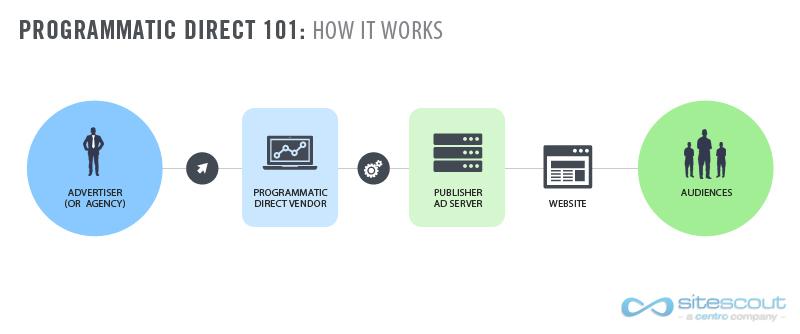
According to eMarketer, $27 billion was spent in 2018 on programmatic direct, which represents 58% of all programmatic advertising. Programmatic direct is the best option for your brand if you’re interested in better targeting because you can choose when your ad will be served, for instance, to visitors coming from a particular zip code.
How programmatic display advertising works
By now, you should have a better understanding of how it works. So, let’s dig a little deeper and look at the back end. Below is an overview of what happens:

- Publishers create ad space on their websites via SSP and connect their SSP with an ad exchange.
- Advertisers set their target audience, cost, budget, and other necessary details with their DSP and connect it with an ad exchange.
- A user visits a website. All the information about the user is sent to the ad exchange.
- If the user’s information matches an advertiser’s defined audience, he will enter the auction for RTB. If it’s programmatic direct, the ad will be served.
- The advertiser with the highest bid will win the ad space for programmatic RTB, and his ad will be served.
- The publisher will get paid for the ad.
This might not seem very different if you’ve ever used a PPC network. The essential difference is that in this case, everything is done programmatically using artificial intelligence, which improves each step of the entire process.
It might seem similar to traditional online advertising, but it isn’t. It takes out all the manual work.
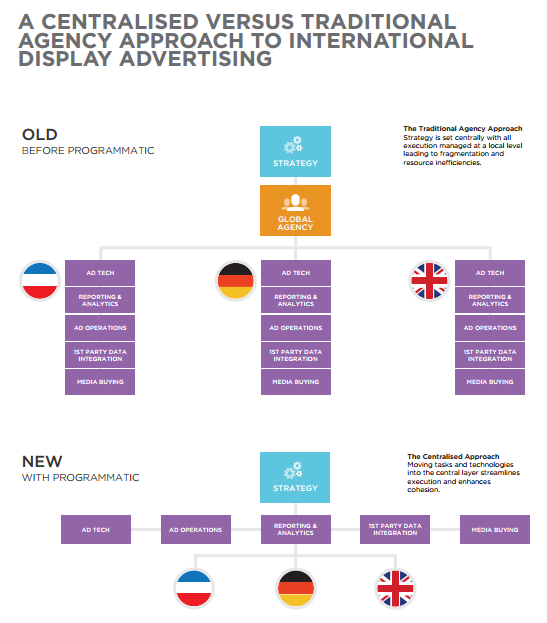
How to get started with your first programmatic advertising campaign
Now that you know the basics of programmatic advertising, let’s discuss how to actually create a campaign. We recommend a 5-step process that will help your brand get the best results.
Our digital marketing agency has used this methodology successfully in several marketing campaigns.
1. Set objectives
Just like any other marketing campaign, you start by setting clear objectives. The first question that you should ask yourself and your team is: Do we really need a programmatic advertising campaign?
Just because your competitor has set up a programmatic RTB campaign doesn’t mean you should invest money in a campaign too. You shouldn’t invest in programmatic advertising just to follow the crowd.
You should opt for programmatic advertising if:
- Your traditional advertising campaigns don’t give you access to your entire target market.
- You can reach your market across all the channels and devices.
- You’ve spent enough on PPC and other forms of advertising and have massive data about your target audience.
- You need to use it as a competitive edge.
You must have a clear understanding of why your business needs programmatic advertising. Once you do, the next step is to set objectives and decide what you want to achieve with a programmatic advertising campaign. What’s your primary goal?
- Brand awareness?
- Increase in sales?
- Lead generation?
- ROI?
- Engagement?
- Traffic?
Your advertising team must be in agreement with the objectives of the campaign.
When Nestle ran its programmatic campaign, its primary goal was to maximize the sale of its coffee machines, and the secondary goal was to reach a new audience. Over 91% of ads were served to new visitors.
If you set clear objectives, you can easily measure results, and at the same time, your team will easily stay focused.
2. Choose DSP
When you run a PPC campaign, you have to register with an ad network. Similarly, you have to choose a DSP when using programmatic advertising. A DSP, as discussed, gives you access to advertisers and ad placements and it allows you to set bids.
A DSP is essential and the first part of your programmatic advertising campaign. Some of the leading DSPs include DoubleClick by Google, Media Math, and Amazon Advertising Platform (AAP). Later in the article, we list some of the major players you should be aware of.
You have to choose a DSP and an agency to kick-start your first campaign. According to Ian Harris, your choice of DSP and agency should be based on two factors:
- The quality and quantity of inventory available with the DSP and your agency.
- The cost of the campaign.
If you’ve conducted programmatic advertising before, a DSP can get started immediately and you can often bypass the need for an agency. But if you’re new to programmatic advertising, it is recommended to go with an agency.
Here are a few important questions that you must ask regarding the DSP and the agency you’re about to work with:
- How do you source your inventory?
- What are the targeting options available to you?
- What are the channels and verticals you support, and what verticals perform best?
- What’s the average CPM?
- How do you deal with fraud and brand safety?
- Do you’ve a fraud protection policy?
- How you track and measure ad viewability?
- Do you offer customized support?
- Do you support rich media?
- Do you have re-targeting features?
The answers will help you determine if a DSP is a good fit for you or not. Before you contact a DSP or an agency, make sure you’ have done your homework and you know what exactly you need, what your objectives are, what channels you need to target, what your budget is, etc.
Once you’re done with the DSP selection, move ahead and initiate your campaign.
3. Optimize and expand
We strongly recommended that you run an RTB campaign because they typically have lower costs while providing you with enough data to optimize your campaign. Statistics show that programmatic RTB is 70% cheaper than programmatic direct. There are two things that you can test and analyze with your RTB campaign: optimization and expansion.
To achieve the best results from your programmatic ad campaign, you have to optimize your creatives, ads, and other variables at all levels. Here are a few variables that you should never neglect:
- Split testing
- Audience segmentation
- Bid adjustment
- Ad frequency
- Creatives
- Placements
- Time of the day
- Devices
- Ad format
- Channel
This is just a sampling of the variables that you can test. Test every variable possible while running RTB programmatic ads. The next phase is to expand the ad size. According to Google, non-traditional ad units have better viewability rates.
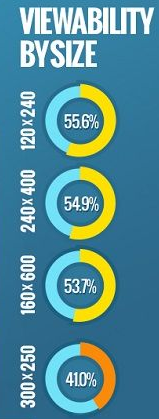
This means you have to expand your ads and bid on ad spaces with lower demand. This will do two things:
- Decrease your cost due to low demand.
- Allow you to test different ad sizes and placements that might lead to an increase in viewability rate.
4. Choose direction publishers
Based on optimization and testing different ad sizes, you’ll be in a better position to choose your programmatic direct partners. Choose websites that perform really well in terms of clicks, ROI, conversions, sales, engagement, and other metrics you consider important for your campaign.
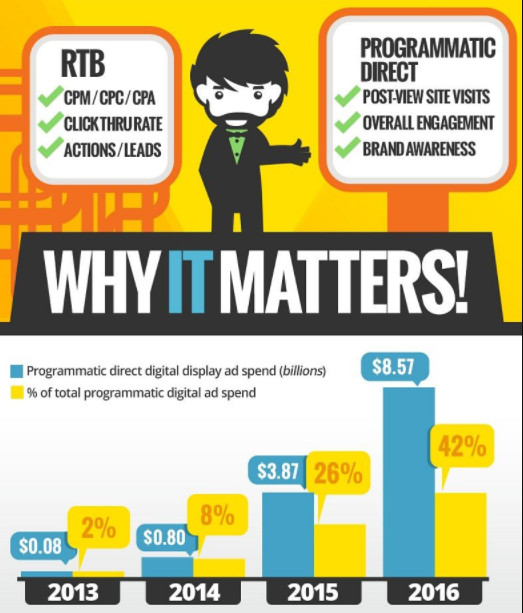
Programmatic RTB should be used for:
- CPM and CPC
- CTR
- Leads
- Testing purposes
While programmatic direct is best for:
- Engagement
- Brand awareness
- Website visits
When purchasing direct programmatic ads, make sure that the publisher is someone you’d like your brand to be associated with because the publisher will turn into your partner. You don’t have to look for CPC and leads, but you have to see the publisher’s philosophy and core values before partnering with it.
Consider programmatic direct as a partnership instead of simply an exchange of ad.
5. Track and measure
Track and measure the progress of your entire campaign based on your objectives and goals. Some 84% of marketers say that better measurement and analysis can help increase digital spending by 25% or more.
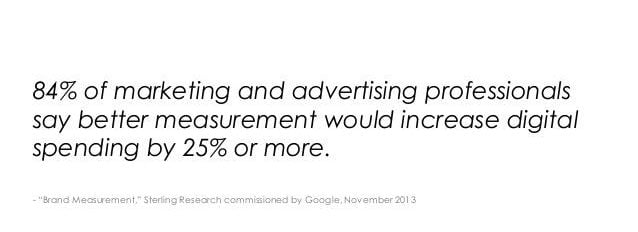
Don’t take measurement lightly. It is the crux of your campaign. Measure the performance of direct publishers and see how well they did in terms of KPIs and primary metrics. Based on the campaign analysis, tweak your creatives, bid, and other variables, and run it again. Direct publishers who don’t do well should be replaced.
Here are a few techniques to measure your campaign’s success:
- Measure viewable impressions of ads. Technically, an impression is counted as viewable when 50% of the ad unit is viewed on a screen for at least a second. Simply measuring impressions won’t help much with your campaign’s success.
- Use an attribution model. This has to be set up prior to creating your campaign. A cross-channel attribution model is what you need to understand all the touchpoints.
- Measure brand lift. An easy approach is to see an increase in your brand-related search queries in Analytics.
Top Demand Side Publishers (DSP) in 2019
When you’re first starting with programmatic advertising, the choices seem endless. The programmatic advertising ecosystem has expanded year over year with new platforms contending with legacy companies.
To get you started, here are a few options to look at:
- Google Marketing Platform
- Facebook Ads Manager
- Amazon Advertising Platform (AAP)
- Adobe Advertising Cloud DSP
- MediaMath
- QuantCast
- dataxu
DSPs are complex and expensive software; you may want to get in touch with an agency that has access to a DSP and experts in programmatic advertising. They can help guide you through the selection process.
Programmatic Advertising FAQ
1.What is programmatic advertising?
Programmatic advertising is the use of intelligent software to automatically buy digital advertisements.
2. Why should I consider programmatic advertising? What are the benefits?
Two words: precise targeting. With programmatic, you’re able to fine-tune your campaigns to reach your target audience with the right ad, at the right time. This means that your advertising dollars are being spent on the people most likely to convert.
Programmatic advertising also offers more transparency and control compared to traditional advertising. You’re able to see what is and isn’t working. Another benefit of programmatic advertising is that this level of insight is immediately available. You don’t have to wait for the campaigns to finish or for lengthy reports.
3. What is the difference between an ad exchange and a DSP?
An ad exchange is a competitive digital marketplace where advertisers and publishers can buy and sell advertising space, typically for display, video, and mobile ad inventory. Impressions are auctioned off through real-time bidding or through programmatic direct.
DSP stands for demand side platform. It’s a technology platform that enables advertisers to manage their programmatic inventory via one interface. Multiple ad exchanges and supply-side platforms (SSP) can be accessed through the DSP.
4. What types of advertisements are available with programmatic?
Programmatic isn’t limited to any specific type of media. As technology has evolved and consumers gravitate towards new channels, programmatic has evolved too. Advertisers can buy inventory on social, display, video, audio, and even streaming television.
5. What type of targeting is available through programmatic advertising?
There are a few different ad-targeting methods available when you design a programmatic advertising campaign. Audience targeting creates segments based on demographic or behavioral data. This can include age, gender, education, interests, etc. If you can define these characteristics of your buyers, you can serve them ads. With contextual targeting, ads are aligned with the content of the webpage, instead of targeting a specific person.
Retargeting allows you to serve ads to people who have visited your website. When they continue to other websites, they can be served ads to re-engage them. Geotargeting allows you to layer geographical information onto your audiences. For instance, you can target men within a specific region.
What you should use depends on the data available through the ad network and your campaign goals.
Conclusion
Programmatic advertising is growing year over year with no decline in sight. As global mobile technology adoption increases, the potential audience size will grow. The time is right to invest in programmatic advertising. I hope this guide has given you the wake-up call to take advantage of this display advertising approach that is aimed at helping you reach a more targeted audience and boost your bottom line.
Now that you understand the basics of programmatic display advertising, you should take a look at how it’s evolving. New digital platforms, sophisticated artificial intelligence tools, and growing consumer privacy concerns are constantly shaping the programmatic ecosystem. Read our blog article, 5 Programmatic Display Advertising Trends for 2020, to learn more.
If you have any questions or need additional help developing a programmatic advertising strategy, our team at Cardinal Digital Marketing is here for you. Speak with our experts here.

